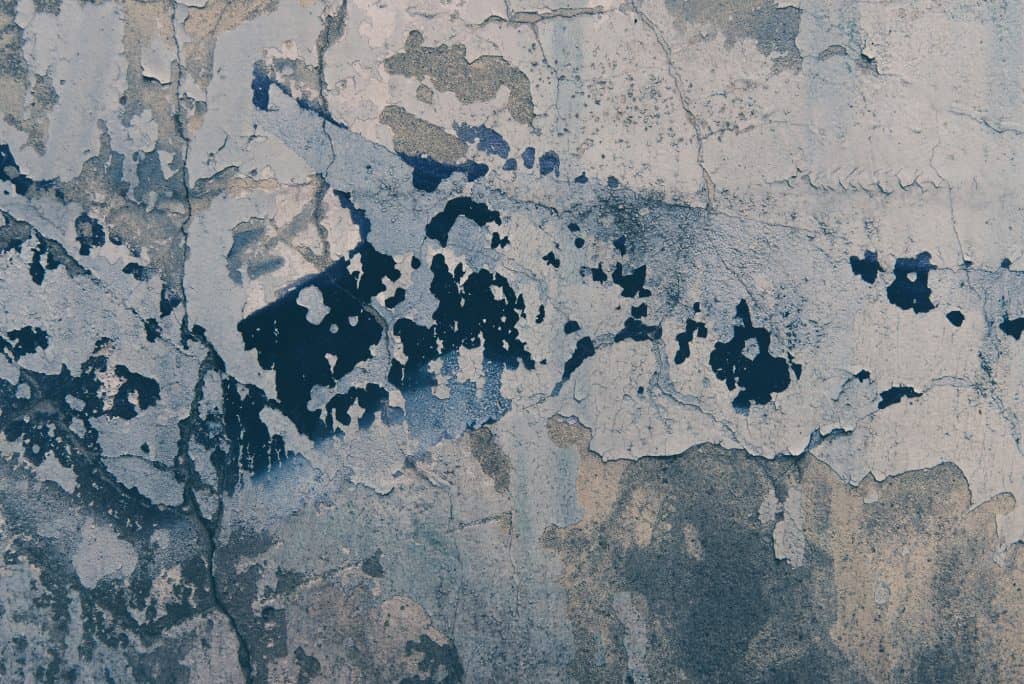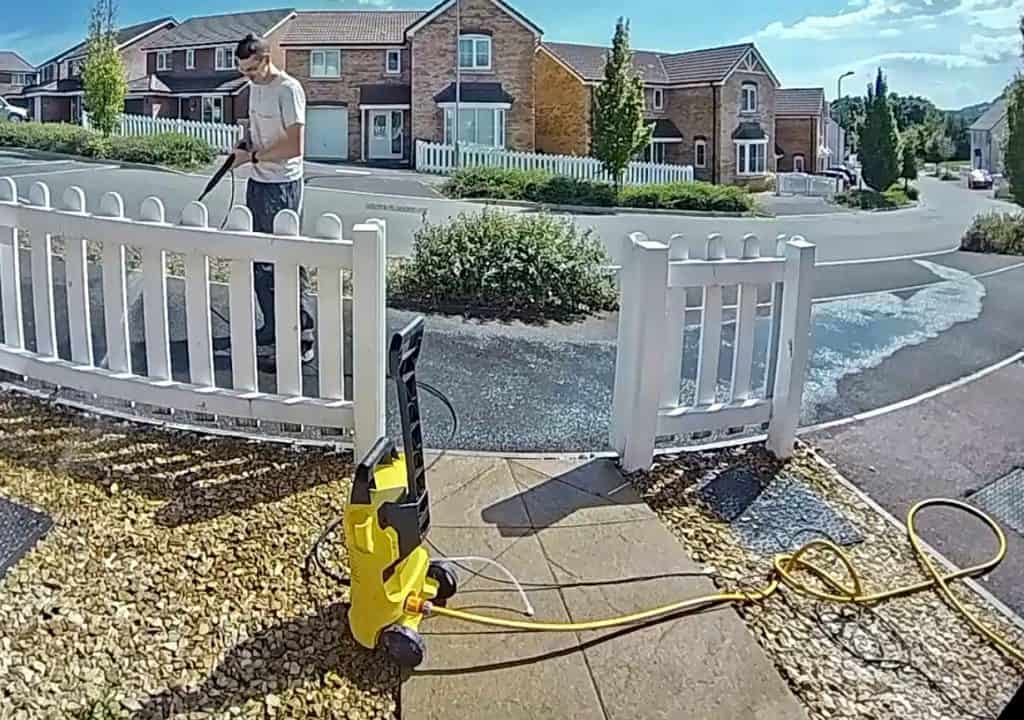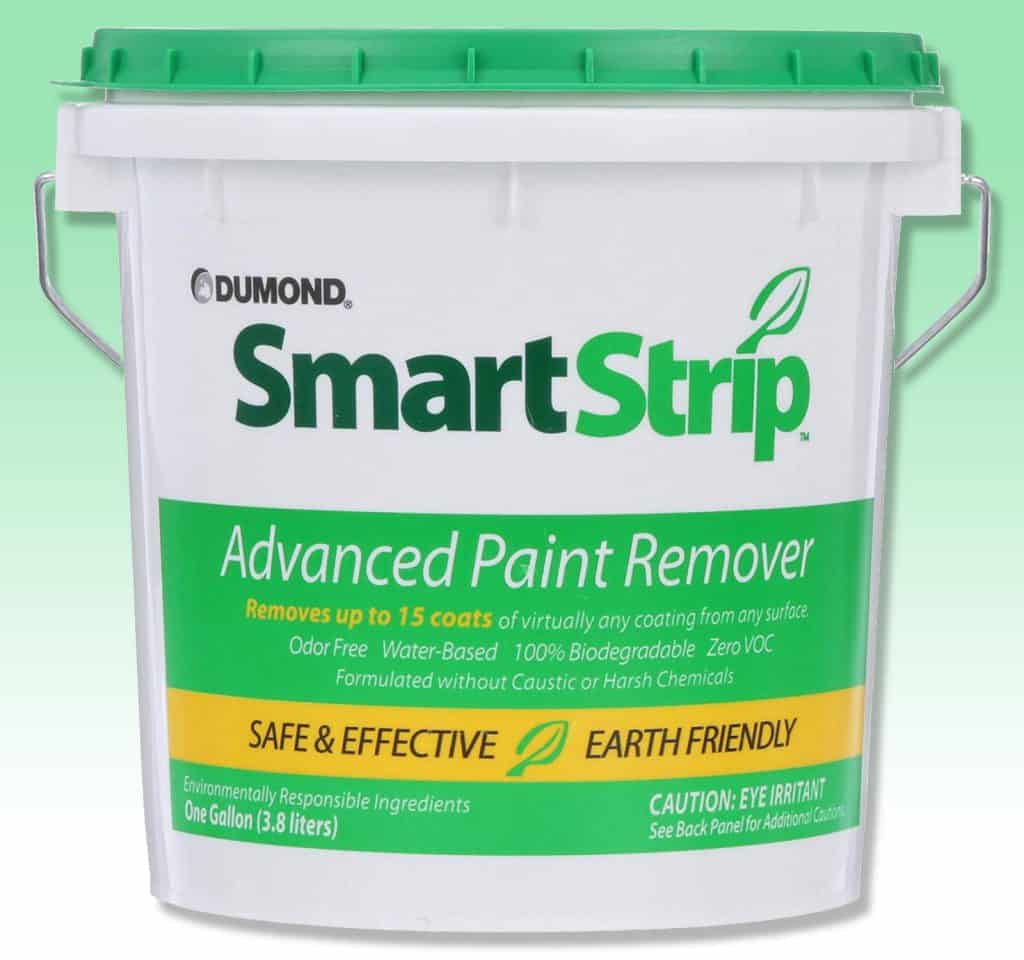Painted concrete floors and driveways are made to last, and removing paint from these surfaces can be difficult. In this era of greater environmental awareness, the last thing most of us want to do is use gallons of harmful chemicals to treat surfaces that our kids and pets will be exposed to, no matter how patchy they look. Fortunately, there are some effective eco-friendly non-chemical ways to strip old paint that will have your surface looking fresh in no time.
Some effective methods to get paint off concrete surfaces without chemicals are:
- High power washer
- Vinegar
- Sandblaster
- Soda blaster
- Surface grinder
- Citrus based cleaning formulas
- Soy-Based gel paint stripper
- Wash wet paint off using dish soap
Before looking at each method in turn, let’s quickly recap on the benefits of avoiding chemicals for this paint removal job.
Chemical Free Ways To Remove Paint From Concrete

If you go into any hardware shop and explain that you need to remove paint from concrete, you will immediately be directed to an assortment of paint strippers. Although most are highly effective, they are also almost always packed with toxic chemicals which the CSPC say:
Some [of these] chemicals may cause cancer, developmental or reproductive problems, or damage the liver, kidney, or brain.
CSPC ‘009509 R042013’: What You Should Know About Using Paint Strippers
There are some good reasons why you may want to avoid using hazardous chemicals on the paved areas around your home:
- Concrete surfaces like driveways are high contact areas for humans and pets. Paint strippers can be highly toxic and even lethal, so it is highly advisable to avoid them.
- Chemicals can continue to release hazardous fumes, especially in an inside area like a garage.
- Toxic runoff may continue for a prolonged period after treating an outside area like a driveway. This may not only kill plants around the area but could seep into the groundwater.
- Environmental awareness is becoming increasingly important. Many of us prefer trying eco-friendly methods before heading for the easy way out, which may have profound long-term effects on the planet.
Concrete is a porous surface which makes removing paint tricky. The paint has usually saturated the surface layer, and getting it all off without resurfacing the entire area can seem impossible. However, it is possible with some patience and elbow grease, and your concrete can look as fresh as the day it was laid.
With any method you use, keep in mind that unsealed concrete can quickly get stained or patchy. After all the effort you are making to clean unsightly paint off an area, it will undoubtedly be a good idea to seal the newly cleaned surface.
Once you have identified a concrete surface that needs to be cleaned, all you need to do is select one of these chemical-free paint stripping methods and let the facelift begin!
#1 – Use A High Power Washer To Remove Paint
It is always best to start any DIY project with the least labor-intensive method. If the paint you need to remove is on an outside area or garage floor, grab the power hose! You might find it works, and you will save yourself a lot of time and effort:

For best results, you will need a strong power washer with a pressure rating of at least 3000psi and a minimum flow rate of four gallons a minute. If you don’t own one of these mean machines, it is usually possible to rent them.
Next, remember that everything will get wet from the spray, including yourself and anything standing on the cement you are cleaning. Cover any fragile plants and ensure that there is no debris or gravel that could be sent flying. Also, it is best to choose a warm, sunny day for your cement cleaning project so that you aren’t stuck with a damp odor in your garage for a long time after.
Set the sprayer’s nozzle to its finest spray setting to have the most pressure on each area it moves over. If you are using a particularly powerful machine, do not underestimate the pressure of a power washer and test it in a small inconspicuous area before you inadvertently blast a few conspicuous lines into the middle of your driveway.
The power hose method of cleaning concrete off a concrete surface can be fun, and you won’t need to spend hours hunched over scrubbing. It is, however, still going to be labor-intensive as you will need the tiny pinpoint nozzle of pressure to cover every inch of the cement you are removing the paint from.
#2 – Use Hot Vinegar To Remove Paint From Concrete
To use vinegar as a natural paint stripper on concrete, simply heat the liquid in a saucepan or the microwave until it is very hot but not boiling. Then apply it to the paint that you want to remove. You can use a paintbrush or dab it on with a sponge, but ensure plenty of hot vinegar covers the paint.
Let the hot vinegar solution soak into the paint for at least 15 minutes before scrubbing it with a wire brush or paint scraper. Once it has lifted, rinse the area with warm, soapy water. If it is particularly stubborn, you can give it another coating of hot vinegar.
Warning: Before reaching for a bottle of vinegar to douse onto the stubborn paint on your concrete, keep in mind that although this natural method is effective, it probably can’t be practically applied to large areas. The reason for this is that to work as an effective paint stripper, the vinegar needs to be hot when it is applied.
#3 – Clean Paint Off Concrete With A Sandblaster
Using a sandblaster to remove paint from concrete will definitely get the job done, but before you decide on this method, first check that your concrete surface is up to the severe beating that it will get from this machine. The last thing you want to do is damage the smooth surface appearance while lifting paint.
The best advice when using a sandblaster is always to use the correct safety equipment and start on the lowest setting in an inconspicuous area. It is incredibly easy to blast unsightly lines into old concrete with a sandblaster, so only move onto main areas once you have established a nice to-and-fro rhythm, so you can achieve an even surface:
#4 – Use A Soda Blaster To Get Paint Off Concrete
If the thought of using a sandblaster to clean your old concrete seems a little too extreme, then there is a less powerful, eco-friendly alternative. A soda blaster uses sodium bicarbonate, commonly known as baking soda, to pressure blast surfaces. It is less aggressive than sand which is highly abrasive and can easily be rinsed away with water when you are done.
A soda blaster works similarly to a sandblaster. It has a steel storage tank to hold the bicarbonate grit with a hose and a nozzle. These handy cleaning tools come in various sizes, so you can get one that suits your job.
#5 – Use A Surface Grinder To Get Paint Off Cement

Surface grinders are available to rent at most hardware stores, and these nifty machines will do two concrete floor revamping jobs simultaneously. Not only will they grind off the top later of old concrete that might contain unsightly paint, but they will also provide a smooth concrete surface once you are done.
Floor grinders come in different shapes and sizes, and you will be able to choose between handheld models suitable for small areas or larger push-along varieties. Floor grinders generate a lot of dust, so you will need to wash or vacuum the surface once you are done.
#6 – Citrus Based Cleaners To Remove Paint From Concrete
Paint strippers made from citrus, usually oranges, may work a little slower than harsh chemical methods, but they are more environmentally friendly and less toxic. An added bonus is that they leave a fresh fruity scent, so indoor resurfaced concrete areas won’t smell like a work zone for months to come.
One of the best-known brands is Citristrip which can be purchased at most DIY suppliers.
#7 – Soy-Based Gel Paint Stripper

Soy-based paint strippers, like Smart Strip, promise an environmentally friendly method of cleaning paint off concrete. This type of paint remover usually comes in a gel form. You paint the substance onto the surface you want to strip and then let it work its magic for a few hours before agitating the surface with a stiff brush or power washer.
Remember that soy-based strippers will take slightly longer than chemical paint strippers, so give yourself more time to complete the project.
#8 – Wash Wet Paint Off Concrete Using Dish Soap
Don’t panic if you have just accidently dripped wet paint on your concrete surface! It can usually quickly and effectively be removed using dish soap, warm water, and elbow grease before it dries.
Quickly combine two tablespoons of dishwashing detergent with a cup of hot water and apply it to the paint drops. Then use a scrubbing brush to agitate the paint and dissolve it in the soapy solution before it can penetrate and set inside the porous layers of concrete.
Rinse, mop the area and repeat as many times as necessary, but removing wet paint from concrete is usually pretty straightforward. Then the natural color of your concrete will be restored.
Conclusion
Getting paint off old concrete may seem like a daunting task that will require gallons of harmful chemicals. However, there are several methods to tackle this task without harming the environment or leaving a trail of harmful toxins or chemical fumes.
